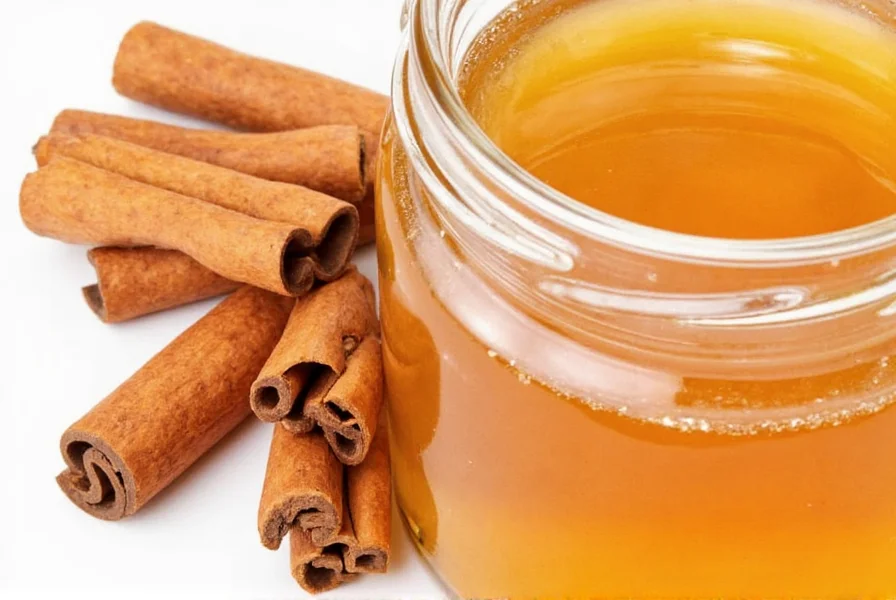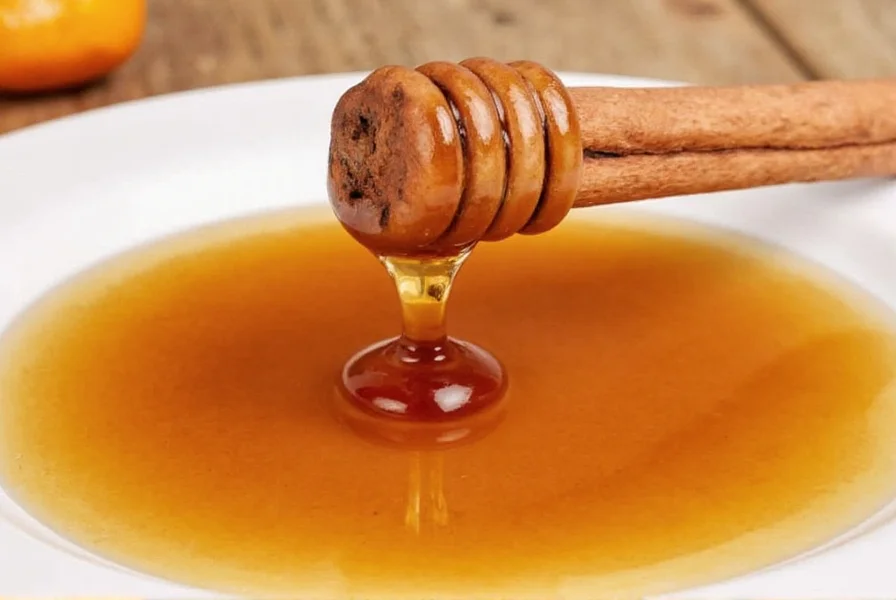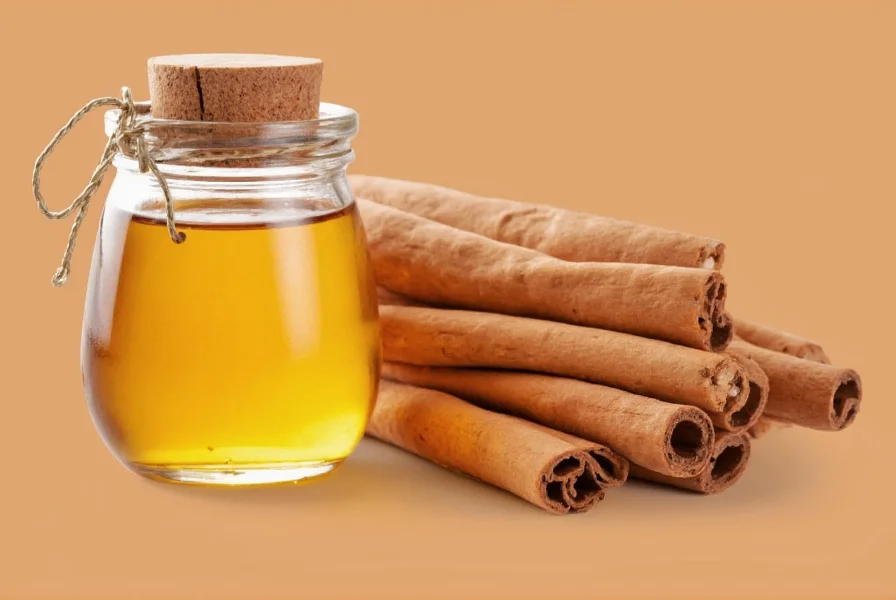For centuries, cultures worldwide have utilized cinnamon honey as both a traditional remedy and flavorful addition to daily diets. This simple yet powerful combination leverages the natural properties of two time-honored ingredients that continue to attract scientific interest for their potential health-promoting qualities.
The Science Behind Cinnamon Honey Benefits
Recent research published in the Journal of Agricultural and Food Chemistry confirms that both cinnamon and honey contain significant antioxidant compounds. When combined, these ingredients create a synergistic effect that may enhance their individual benefits. Cinnamon contains cinnamaldehyde, which gives it distinctive flavor and potential metabolic benefits, while raw honey contains over 200 natural compounds including enzymes, vitamins, and minerals.
A 2023 systematic review in Nutrients examined multiple studies on cinnamon honey combinations and found promising evidence for several health applications. The review noted that the combination may support healthy blood sugar metabolism when consumed in moderation as part of a balanced diet. However, researchers emphasized that cinnamon honey should complement—not replace—standard medical treatments for metabolic conditions.

How to Make Cinnamon Honey Properly
Creating effective cinnamon honey requires attention to ingredient quality and preparation methods. For optimal results:
- Use raw, unfiltered honey to preserve natural enzymes and compounds
- Select Ceylon cinnamon ("true cinnamon") rather than Cassia for lower coumarin content
- Maintain a ratio of 1-2 cinnamon sticks per 8 ounces of honey
- Allow the mixture to steep at room temperature for 7-14 days
- Store in an airtight container away from direct sunlight
Many people wonder about the best temperature for preparing cinnamon honey. Research indicates that heating honey above 118°F (48°C) can degrade beneficial enzymes, so it's recommended to avoid cooking the mixture. Instead, let the cinnamon infuse naturally at room temperature for maximum benefit retention.
Culinary Applications of Cinnamon Honey
Beyond potential health benefits, cinnamon honey serves as a versatile ingredient in various culinary applications. Professional chefs and home cooks alike appreciate its complex flavor profile that combines sweetness with warm spice notes.
| Culinary Use | Recommended Ratio | Best Application |
|---|---|---|
| Tea sweetener | 1 tsp per 8oz beverage | Ideal for herbal teas and chai |
| Yogurt topping | 1-2 tbsp per serving | Enhances Greek yogurt with natural sweetness |
| Baking substitute | Replace 1/4 of sugar | Works well in muffins and quick breads |
| Salad dressing base | 1 tbsp per dressing | Creates balanced vinaigrettes |
Evidence-Based Health Considerations
When evaluating cinnamon honey for immune support, it's important to understand the current scientific consensus. A 2022 clinical trial published in Complementary Therapies in Medicine examined cinnamon honey's effects on upper respiratory symptoms. While participants reported subjective improvement in throat comfort, researchers noted these effects were likely due to honey's well-documented soothing properties rather than any specific "cure" for infections.
For those interested in cinnamon honey for digestive health, preliminary research suggests potential benefits. The combination may support gut microbiome diversity due to honey's prebiotic properties and cinnamon's anti-inflammatory compounds. However, individuals with specific digestive conditions should consult healthcare providers before using cinnamon honey therapeutically.
Safety and Usage Guidelines
While generally safe for most adults, cinnamon honey requires some considerations:
- Infants under 12 months should never consume honey due to botulism risk
- Cassia cinnamon contains higher coumarin levels that may affect liver function in sensitive individuals
- People with cinnamon allergies should avoid this combination
- Those managing blood sugar should monitor intake as both ingredients contain natural sugars
The American Heart Association recommends limiting added sugars to no more than 25g daily for women and 36g for men. When incorporating cinnamon honey into your routine, account for its natural sugar content within these guidelines.

Practical Tips for Daily Use
For those exploring natural wellness approaches, cinnamon honey can be incorporated thoughtfully into daily routines. Many nutritionists recommend starting with small amounts—about 1 teaspoon daily—to assess tolerance. The most effective time to consume cinnamon honey appears to be in the morning, either stirred into warm (not hot) water or added to breakfast foods.
When selecting ingredients, look for raw, unprocessed honey with visible pollen particles and choose Ceylon cinnamon labeled specifically as such. Proper storage in a cool, dark place helps maintain the beneficial compounds in both ingredients. Remember that genuine cinnamon honey develops its characteristic flavor gradually—patience during the infusion process yields superior results compared to rushed preparations.
Frequently Asked Questions
What are the proven health benefits of cinnamon honey?
Research indicates cinnamon honey may offer antioxidant properties, support healthy metabolic function, and provide natural antimicrobial effects. Studies show the combination contains bioactive compounds that work synergistically, though more research is needed to confirm specific therapeutic applications. The most well-documented benefit relates to honey's soothing properties for throat comfort.
How long does homemade cinnamon honey last?
Properly prepared cinnamon honey stored in an airtight container at room temperature typically remains fresh for 6-12 months. Raw honey's natural preservative qualities prevent spoilage, though the cinnamon's potency may gradually decrease over time. For optimal flavor and benefits, use within 6 months. Always check for any signs of mold or off odors before consumption.
Can cinnamon honey help with weight management?
While some claim cinnamon honey aids weight loss, scientific evidence is limited. Research suggests cinnamon may support healthy metabolism, but cinnamon honey still contains natural sugars. When used moderately as a replacement for refined sugars, it might fit into a balanced approach to weight management, but it's not a standalone solution. Portion control remains essential as with any sweetener.
What's the difference between Ceylon and Cassia cinnamon for honey infusions?
Ceylon cinnamon ("true cinnamon") contains significantly lower levels of coumarin—a compound that may affect liver function in high amounts—compared to Cassia cinnamon. For regular consumption, Ceylon is generally preferred for safety. Ceylon has a more delicate, complex flavor profile that blends beautifully with honey's sweetness, while Cassia offers a stronger, more pungent taste.
How should I store cinnamon honey for maximum shelf life?
Store cinnamon honey in a cool, dark place in an airtight glass container. Avoid refrigeration, as cold temperatures cause honey to crystallize. Keep away from direct sunlight and heat sources to preserve the beneficial compounds. Properly stored, it maintains quality for 6-12 months. If crystallization occurs, gently warm the container in lukewarm water to return it to liquid form without damaging the beneficial properties.











 浙公网安备
33010002000092号
浙公网安备
33010002000092号 浙B2-20120091-4
浙B2-20120091-4